Duck Dive: Indiana Hoosiers Football 2025 Preview
Special thanks to L.C. Norton who writes about Indiana for SBNation and joined me on this week’s podcast to discuss the Hoosiers’ roster:
Last year’s preview of Indiana was one of the very few in the 2024 offseason that accurately predicted the Hoosiers’ leap in performance in the coming Fall under new head coach Cignetti and his staff brought over from James Madison as well as a nearly total roster overall.
The main observations that led me to this conclusion were that first, I’d charted the entire Big Ten for the previous three seasons and had seen how poorly most of the teams on Indiana’s 2024 schedule dealt with modern college football schemes from outside this league’s bubble. Those opponents were simply not athletically ready to defend OC Shanahan’s RPO scheme with five viable options on any given play, nor did they have offensive answers to 2nd or 3rd & long pressure packages against DC Haines’ approach that would completely sell out on 1st down to stop the run and deny them short-yardage efficiency plays. These strategies and how they matched against the Hoosiers’ conference slate were readily apparent during Indiana’s 2024 Spring game which L.C. and I discussed extensively last Summer, yet were curiously absent from that offseason’s larger discourse … it was as if most of the media hadn’t watched Spring practices at all.
The second observation came from my experiences previewing Arizona State and Colorado in 2023. This was when head coaches Dillingham and Sanders respectively had taken over those programs, and the NCAA had removed the initial counter cap so that teams could bring in as many new players as they wanted in a single offseason. Sanders got all the media attention by turning over all but ten of the scholarship players he inherited, but Dillingham was nearly as aggressive with a massive roster overhaul of his own. As I detailed in my preview at the time, Sanders had the advantage of bringing over a core of talented and proven players as well as the operational coaching staff from his previous school, Jackson State, so they could hit the ground running.
But while he avoided this problem at several position groups, at several others I thought Sanders was committing a classic roster management mistake of “falling in love” with a single unproven transfer for a spot, that is, betting on one new player and not getting multiple options and letting the best guy prove it in camp (as well as providing backup options in case of unavailability). As the inevitable disappointments without alternates have happened, it’s limited Colorado’s progress so far. For Arizona State, I was much more impressed with Dillingham’s balance in management — there weren’t any glaring errors — but he simply didn’t have the advantage Sanders did with importing a core group from a previous school or the pull of the limelight to get the same level of immediate-impact talent, and so I was on record at the time that it was going to be a longer term but more bankable build for the Sun Devils … and they made the playoffs (and gave Texas all they could handle) in year 2.
When L.C. and I talked last Summer and we went through the roster overhaul Cignetti was engaged in at Indiana, it struck me as the best of both: like Sanders he had the core group of talented players and coaches to import from James Madison, but like Dillingham he’d done an excellent job of balancing all of his position groups so that every spot had multiple options to choose from and there were always more than enough guys who’d proven they knew what they were doing so that they had a good plan A and plan B everywhere. With the ruthless and unsentimental approach that he brought to management as we’ve discussed on the podcast — no playing favorites, no schematic hangups — the Hoosiers were set to barnstorm this league.
In 2025, most of the elements that contributed to Indiana’s 11-win season last year remain in place — almost no staff change, a ruthless approach, a league that’s in many ways still stuck in the mud, and several of the star players from last year’s team at multiple units on both sides of the ball — and so I think they’ll continue to find success. But I’m a bit less sanguine than last offseason, as the schedule has toughened up (the main differential is three games: Michigan, Nebraska, and Washington leave off, while Illinois, Iowa, and Oregon come on) and as we encountered a few times throughout the podcast, this offseason the staff hasn’t been as thorough as the last time at giving themselves multiple options at every position group that they needed to restock. If everything works out with the guys that they have and everyone stays healthy all year, then this same staff which has already shown they know what they’re about should do great, but those are much thinner margins this year with more possibilities for something going wrong.
:no_upscale()/cdn.vox-cdn.com/uploads/chorus_asset/file/26045912/Indiana_offense.png)
Indiana’s starting quarterback last year, Kurtis Rourke, had transferred in from Ohio after a long career with the Bobcats, and played in every game with the Hoosiers except one he missed with an injury. Rourke distributed the ball beautifully in the scheme with an outstanding 176 NCAA passer rating more than two deviations above FBS median.
To the extent the passing offense would get in trouble, it would come on quick pressures – Rourke’s mobiliy was fairly limited, and either because Shanahan only had hot routes built in for a single receiver or Rourke would just seek out the same guy every time in a panic, it was very predictable where the ball was going if a defense could get penetration quickly. This resulted in the big discrepancy in Indiana’s down & distance situational effectiveness in the passing game: around 70% on early downs (1st & 10, 2nd & short/medium) but collapsing to the 40s or worse on late downs (2nd & long, all 3rd downs). That was far easier said than done and it was pretty much the only way to stop the Hoosiers’ offense, but for defenses that could do so (and understood that’s what they were doing, Maryland stumbled into it in week 5 but then wandered off from the strategy) they could completely lock the RPO scheme down for entire games.
Rourke was drafted in the 7th round by the 49ers. Backup Tayven Jackson, part of a two-QB rotation in 2023 after coming in from Tennessee, has transferred back out, though he saw his passer rating shoot up to 171.1 in the one game he played against UW. Indiana had taken two prep recruits last year, low 4-star #15 QB Cherry and mid 3-star #16 QB A. Mendoza, both of whom redshirted. Cherry is going to miss the 2025 season with an injury, and due to an unusual but consistent policy of Cignetti’s, he’s off scholarship this year and will be a student coach of the team – L.C. told me that Cherry is fully expected to return to the roster with no problems in 2026. Mendoza is the younger brother of the Cal QB whom Oregon faced in 2023 and who has now also transferred into Indiana, #15 QB F. Mendoza. The second transfer in is #5 QB Wilson from Old Dominion, who missed most of 2024 with an injury but was the starter in 2023. Finally, they’ve taken a prep recruit this cycle, low 3-star #12 QB Jac. Bell, who’s expected to redshirt.
The older Mendoza will almost certainly have the starting job, and I think he’s an even better fit for Shanahan’s offense than I thought Rourke would be at this time last year. Even as a first year starter with the Bears coming off of running the practice squad I could see how his big frame, fast release, and command of quick over-the-middle passing was going to tear up Pac-12 defenses that were accustomed to RPO offenses, and he did better in 2024 with a noticeable tick up in passer rating. I also think he’s considerably more mobile than Rourke, and it’s unlikely that he’ll be more infatuated with going to the same target under pressure, so I think he’ll provide some relief for that issue with the offense as well.
As for the backup, from what L.C. told me it seems like they’d only go to Wilson if they had to and would prefer to go with the younger Mendoza if possible. Wilson is considerably more experienced but it seems like he’s hit his ceiling, and he’s already coming off of a major injury. L.C. said that Mendoza could be the QB of the future and so unless there’s a significant gap in readiness at the time a backup is called on, they’d want to go with him.
Last year’s running back room had six available guys, all of whom were new to Bloomington. Three were transfers in from JMU, #8 RB Black, Ty Son Lawton, and #18 RB Vanhorse, while two were ACC transfers, Justice Ellison from Wake Forest and Elijah Green from North Carolina, and the last was a prep recruit who L.C. told me had committed earlier to the previous staff but happened to fit the body type the new staff prefers so he stuck around, #28 RB Martin. All of them except the freshman Martin were covid-era super seniors with considerable experience, and this unit was Exhibit A in Cignetti’s approach to getting plenty of options and letting the top ones prove it without sentimentality.
Those turned out to be Ellison and Lawton, who split nearly identical meaningful carries (Ellison had a significantly higher per-carry success rate, 66% vs 49%, though their adjusted YPC was nearly identical just under 5). Both have graduated, while Green has transferred out. Black, Martin, and Vanhorse return. The three additions are mid 3-star prep recruit #20 RB Cuono, #29 RB Beebe from UAB, and #1 RB Hemby from Maryland.
Black only got 16 meaningful carries during the year, about a tenth of what Ellison or Lawton had, with the rest of his coming in garbage time. Black’s per-carry numbers are suggestive that he would have had comparable production if they’d used a three-back system, though with so few touches outside garbage time that’s only a guess. It’s also murky whether the staff has firm preferences for using only two backs and that’s why Black was getting so little last year, or if there was a more substantive issue – L.C. allowed both might have been at play. Both of us agreed he’s likely to get first crack at being a primary ballcarrier in 2025, but the Hoosiers have alternate options and nothing is guaranteed.
We also saw the rest of the room the same way – Beebe and Hemby are the other main competitors for primary back, while the youngsters Cuono and Martin are developmental and Vanhorse is depth as he’s sort of undersized for Power conference play. Beebe’s raw stats look solid though I don’t have much eyes on him; I have been charting Hemby for several years and think he’s the least likely of the three main options to emerge for Indiana, since he’s been stuck at a 44% success rate and 4.1 adjusted YPC for the last two seasons with just about every other Maryland back outperforming him in the same offense.
While this room isn’t quite as chockful of proven options as in 2024, it’s got three solid ones and three seemingly viable depth pieces for what was a two-back system last year. That’s a good ratio to hit and there’s no signs of trouble here – I’m expecting a comparable performance, or at least for any step back to not really be of significance given the playcalling leans into the pass when the chips are down.
The tight end unit had five scholarship players in it last year, including two developmental guys retained from the previous staff, but they really only got any production in the 11-personnel offense from the JMU transfer Zach Horton. Even Horton’s stuff was more or less limited to checkdowns and dumpoffs, he had a very nice 63.5% efficiency rate on his targets but a mediocre 7.5 adjusted YPT. He signed a UDFA with the Lions while almost everyone else transferred out: Brody Foley and Sam West whom the new staff inherited plus Brody Kosin whom they’d recruited last cycle. The only returner is #48 TE Bomba, who’d transferred in from Miami of Ohio a few years ago and has been sporadically used as a blocker by both staffs.
This cycle they’ve taken four additions. Two are mid 3-star freshmen L.C. and I expect to redshirt, #85 TE Barker and #84 TE Thiry. It’ll likely come down to a Fall camp competition between the two transfers, #37 TE Nowakowski from Wisconsin and #19 TE Staes from Tennessee. I happened to chart both last year for different reasons; neither was really a primary passing target in their offenses – Staes came in at 54.5% efficiency and 5.7 adjusted YPT on 11 meaningful targets while Nowakowski was at 40% and 6.8 on 15 (Staes’ raw stats show him with bigger numbers than that but they’re propped up by one big catch in garbage time against an overmatched opponent, which is a synecdoche for Tennessee’s entire season). L.C. and I both tentatively picked Staes to win the pass-catching tight end job between the two of them while Nowakowski would get the blocking job to the extent one is needed, but frankly that could just as easily flip and I don’t think it much matters to Shanahan’s offense.
In my opinion the wide receiver unit was the key to understanding Indiana’s offensive success last year, both in the sense that opponents simply could not cover all the excellent options the Hoosiers put on the field which the scheme rendered simultaneous viable threats due to constant tension plays, and in that during the offseason the sheer volume of previously productive options the staff had given themselves allowed them to be selective and handle problems without consequence. Going into Fall camp in 2024, Indiana had eight scholarship receivers with previous quality college production – almost all of it from G5 or somewhat maligned Power programs, but for those with an eye for talent or statistical evaluation this was an extraordinary collection. As one particularly prescient analyst put it, “this room constitutes a significant upgrade between the additions, retentions, and shedding some unproductive players, and could be one of the most dangerous WR groups in the league.”
That level of depth allowed Indiana to take several events in stride that might have sunk more poorly managed programs: for one, bluechip #7 WR EJ Williams who’d previously transferred in from Clemson and has had a long productive career but checkered by injuries still wasn’t healthy and had to redshirt the season — he was another who left the roster due to Cignetti’s policy and briefly got in the portal, but has returned; L.C. told me to no problem — for another, one of the best receivers Indiana had produced in Donovan McCulley wasn’t working out in Shanahan’s RPO offense because of a stylistic mismatch and wound up sitting out the season to preserve his redshirt (he’s just too much of a tall, loping flanker who fits a more traditional offense, I think he’ll do well at Michigan). With two down, they still had enough depth to be choosy and didn’t really play another fairly productive receiver from the room, Andison Coby, because he also wasn’t the best fit, while getting steady rotational play for five main guys plus developmental backup time for a true freshman I haven’t even mentioned yet.
The crown jewel of the room, and of the JMU transfer group, was #13 WR Sarratt, who proved to be the leading target – about half again as many as any other wideout on normal throws, but since he was also the sole “panic button” guy alluded to earlier he got an extra chunk of targets that pushed his proportion even higher. Despite all the focus his per-target numbers were stellar, a 63.5% success rate and 10.4 adjusted YPT. Sarratt returns, as does #3 WR Cooper, whose numbers were also incredible at 60.5% and 11.4 adjusted YPT, though on basically the same number of targets as the other three wideouts in the rotation.
Those three have all graduated, each of them on the shorter side and mostly rotating with each other in the slot although getting some outside play as well since other than the 6’2” Sarratt at X the staff played fairly loosely with the formation. They were Myles Price and Ke’Shawn Williams, who had nearly identical success rates and YPTs around 64% and 9.4 and signed UDFAs with the Vikings and Steelers respectively, and Miles Cross who came in at 60% and 7.9, and L.C. reminded me was a relatively late addition from Ohio who had a previous connection with Rourke.
Presumably the staff wants to get up to at least five playable guys again, but this year I think they’re in a much tighter spot to pull it off. Sarratt and Cooper returning is great, and Williams coming back from injury and being re-recruited by the staff for a second time is probably a good signal that he has a job waiting for him. The now true sophomore they were getting reps for last year is #80 WR Becker, though L.C. said he doesn’t expect him into the main rotation unless there’s an injury.
They’ve taken three portal additions: #0 WR Brady from Cal and New Mexico State before that, #2 WR M. Jackson from Appalachian State, and #9 WR Morris from Michigan. Brady was fairly productive at NMSU, a bit less so at Cal though still the third leading receiver for Mendoza and was obviously brought in for the same reason Cross was for Rourke. Jackson has been highly productive both of the last two seasons with App St and no doubt has a job waiting as well. I’ve been pretty skeptical of Morris, his numbers were awful last year of course but they significantly lagged a couple other targets during Michigan’s title run, though L.C. told me he was lighting it up in Spring practices and was on his way to quite a redemption arc … but that it’s been unfortunately cut short because of an injury and Morris will miss the season.
Indiana has five great looking and experienced receivers, some of whom already have phenomenal numbers with this staff, plus a young wideout for depth – this situation precisely describes what the Hoosiers hit the field with throughout 2024, so in a sense expectations should be very high. But they started out with two fewer veterans than they had at this time last year — six instead of eight — and they’ve already had one lost to injury this year just like they lost EJ Williams to injury in 2024, so they’re down to five. That means they don’t have the same slack they had last year to be choosy or let a guy go who wasn’t quite perfect for the system. The alternatives are an unproven players like Becker or the three mid 3-star true freshmen they took this cycle – that’s starting to look pretty different, in terms of depth and selectivity. It means rolling the dice, and I can’t predict if they’ll turn up boxcars or snakeeyes. More to the point, what I praised this staff for last year was that they weren’t gambling at all.
Given the parlous state of Indiana’s offensive line and the previous staff’s reluctance to replace an obviously inept OL coach well past the point when it was clear that needed to happen, L.C. and I had predicted last Summer that this unit was going to be the bottleneck that ultimately limited how far the offense could go since transfer solutions were most constrained here and that proper organic growth was going to take more time. Both of us agreed that current OL coach Bostad, a veteran from Wisconsin and the one holdover from when he was hired in 2023, will likely take the room in the right direction, but even with a hot iron coming off a great season in 2024 the recruiting hasn’t been striking a lot of sparks and this will likely be a pretty slow build.
In 2025, the Hoosiers return multi-year starter #65 LT C. Smith, as well as guards #74 OL Lynch who was recruited to Indiana and #62 OL Evans who walked on at Wisconsin, all of whom started out in 2022. I had Lynch down as the starting RG and Evans as the 6th man from their rotation patterns, but L.C. told me that it was more complicated and Evans was more likely to have had a starting job along with JMU transfer Nick Kidwell, but injuries disrupted that. Kidwell wound up not playing at all and running out of eligibility, while JMU transfer Tyler Stephens took over at LG and longtime Indiana vet Mike Katic swapped in at center somewhat unexpectedly; both Stephens and Katic have graduated as well.
What further complicates the returning situation is that the last three older players have departed without much explanation. Tackle Cooper Jones, who I believe still had a year of eligibility left — and I would have liked to see play at RT instead of Wisconsin transfer Trey Wedig who was on his last year to minimize the multiple transfer effect — is no longer listed on the roster but there’s no record of him transferring out either. L.C. told me there were no reports of him being hurt and it’s unknown why we haven’t seen him. Redshirt senior Vince Fiacable and redshirt sophomore Austin Barrett have also transferred out. That means Indiana has only seven returners on the roster – the three who played last year, and four mid 3-star freshmen who redshirted and L.C. said were probably not going to be options in 2025.
They’ve taken six additions to the room. Three of them are prep recruits — more mid 3-star freshmen; L.C. said it’s just the nature of Indiana’s recruiting profile and it’s not reasonable to demand bluechips to roll in yet — and three are transfers: #67 OL Benson who started at Indiana, went to Colorado last year, and is now back, #78 OL Coogan from Notre Dame, and #75 OL Michalski from Ohio State. I think Coogan is the pick of the litter, his background is nearly identical to Rocco Spindler who landed at Nebraska – high grades and lots of starting experience over the last two years despite not winning the job out of Fall camp either time because of injuries to the starters. Benson was Indiana’s starting RT in 2023, I wasn’t wild about him then, then at Colorado he played RG but was hurt and only played a few games. Michalski was, depending on how you count it, Ohio State’s maybe fourth-string option at left tackle and after a string of injuries put him in place to start against Nebraska in a eye-watering outing was replaced by moving the starting left guard over to finish the season.
L.C. and I agreed on three of the positions: Coogan has played LG and center before; the need for a competent snapper is much more pressing so he’s got that locked down. Both of us thought that Smith was serviceable but not a world-beater and that his stiffness would get Indiana in trouble against elite pass rushes in 2024 — though L.C. said he looked better live in the 2025 Spring game, which wasn’t recorded so I didn’t get to observe — and at any rate the Hoosiers have no better option to replace him so Smith will be back at LT again. Evans had an Achilles injury last year which I hadn’t known about, it kept him out of the Spring game, but L.C. said that if he’s ready by the Fall he should have the LG spot, if not it’ll go to Lynch, and I agree.
If Evans is out, then there’s only one solution for the right side of the line: Benson at RG, Michalski at RT. That’s what L.C. thinks it’ll be even if Evans is available, and Lynch will be switch to backup in that scenario. But in a world where Lynch is flexible because Evans is healthy, I differ from that opinion: I think that Lynch is more playable than Michalski, and so I would put Lynch in at RG (where he was in 2024) and Benson in at RT (where he was in 2023), while relegating Michalski to the bench.
Regardless, there’s only one guy on this entire line I actually like (Coogan, though maybe Evans is starter-caliber too and I just didn’t get a good enough look last year) while multiple guys I think are somewhere between injury risks and active liabilities. They’re locked into playing at least two transfers directly out of the portal and possibly three, which longtime readers will know has empirically translated into far from ideal performance. And the depth situation is nothing but unheralded and inexperienced freshmen. Bostad has his work cut out for him.
:no_upscale()/cdn.vox-cdn.com/uploads/chorus_asset/file/26045911/Indiana_defense.png)
Indiana’s defensive strategy in 2024 played into their strengths and covered up their weaknesses, while exploiting most opposing offenses’ inability to play from behind the chains. Their strongest three defensive players were all in the front (I’d argue the two of the next three strongest were also starters in the front), and DC Haines used them in high-leverage aggressive postures to smash 1st down rushing so as to deny plodding Big Ten offenses the short-yardage subsequent downs they relied on for conversions. This resulted in a big imbalance over the course of the year towards longer-distance 2nd and 3rd downs, at which naturally any defense is more successful but the Hoosiers hit even harder with pressures from those same talented front players to get off the field.
This covered up weaknesses that are apparent in the situational analysis – absolutely atrocious short-yardage defense at just 30% defensive success (only 12% on 2nd & short, when they’d give up big plays to analytically minded OCs and competent QBs) and a massive 35+ percentage point differential in any given short vs long yardage down situation indicating that the pass rush rather than the coverage was doing all of the work since the front has to hold back and set the edge in short yardage. There’s also a big split within the 1st down numbers – a phenomenal 63.7% success rate against the run, but only 50% against the pass. However, most of the opposing offenses were too benighted to take advantage of any of these weaknesses – they’d just keep on running on 1st down, if they ever got into short-yardage situations they’d take a guaranteed pickup instead of taking a shot, and of course few of the noodle-armed QBs in this league can convert a 3rd & long to save their lives.
Structurally I’ve seen it described as a hybrid 4-3 / 3-4, although since they’re virtually always in a nickel this is really better understood as a 4-2-5 with a stand-up end who’ll drop into coverage fairly frequently and so it hybridizes into an odd surface but without a true two-gapping nose – it’ll remind Oregon fans of former DC Andy Avalos’ defense in 2019-2020. They lose the two big tackles in the middle from 2024, Kent State transfer CJ West who was drafted in the 4th by the 49ers and JMU transfer James Carpenter who signed a UDFA with the Jaguars.
The two backups behind them during meaningful play were Marcus Burris who’d come in from Texas A&M and #95 DT Tucker, another JMU transfer. This was another unit were I had a lot of praise for the new staff’s management in 2024 for bringing in plenty of options and not playing favorites – they also had #90 DT Monette and ASU transfer Robby Harrison, both from the 2022 cycle, and had recruited #97 DT Landino, so seven guys in the room, but they didn’t give precedence to both JMU guys or the Power conference transfers, and they gave Landino the developmental reps instead of the older Monette or Harrison.
Harrison transferred out, not a huge shock without any playing time, but Burris hit the portal in Spring while looking like he was in line for a lot more, which I discussed with L.C. as a surprising move. Tucker returns and doubtlessly has a spot, though we agreed the ship has probably sailed on Monette after not playing for three years under two staffs. Landino is interesting, L.C. repeatedly mentioned him as being able to play tackle or end and seeing him at end in the Spring game, but his size says tackle and the depth situation looks like they need him much more in the middle than on the edges. Considering that they played four, arguably five last year (a standard number for tackles in this type of front) and they’d only have three playable tackles without Landino in 2025 assuming both of the transfers work out, I don’t understand why him moonlighting anywhere else is even under consideration.
Those transfers are #91 DT Ratcliff from Texas State and #0 DT Wheeler from Western Kentucky. Both are redshirt seniors with multiple years in the primary rotation, and they fit right in with the staff’s previous track record of taking proven but not well known G5 transfers. The issue that L.C. and I talked about is similar to the wide receivers – they took fewer options here than they did last year. Including Monette but excluding true freshmen, it was six options in 2024 to find four so they had two for slack, but it’s only five in 2025 so they can only afford to slack Monette and everybody has to work out: Tucker and Landino have to handle stepping up, while Ratcliff and Wheeler have to translate to the Power conference level. If anything goes wrong they have to play some mid 3-star true freshmen, or go without rotation, neither of which are good options for maintaining last year’s level of play which was instrumental to their strategy.
There wasn’t much rotation at the two edge spots. JMU transfer and covid-era super senior #6 DE Kamara played virtually every rep at the fist-down end spot, while West Virginia transfer and fellow super senior Lanell Carr played the fist-up STUD, though Jacob Mangum-Farrar (who’d transferred in previously from Stanford where he was an ILB in that 3-down defense, then was converted to this more OLB-adjacent position) relieved him in some games but missed a good chunk of the middle of the season.
This isn’t to say that Indiana had a thin room in 2024, they just redshirted two freshmen, had a promising transfer get hurt, and elected not to play two other guys they inherited. The guys they passed up have now transferred out, those were Ta’Derius Collins and Venson Sneed, both of whom I think were the size to play fist down end behind Kamara but they just didn’t get any time, and when Kamara decided to come back for a sixth year in 2025 they bounced.
Last year Indiana got the transfer of mid 4-star #42 DE A. Depaepe from Michigan State, who hadn’t played as a true freshman in 2023 for the Spartans, and recruited his younger brother #98 DE W. Depaepe as a prep. The older Depaepe got hurt and missed the 2024 season and was still out during the Spring game, while the younger redshirted last year and was in a reserve role during the Spring game, so nobody has really seen either of these guys play at all and L.C. told me we have no clue if or when they’ll ever contribute for the Hoosiers. The other 2024 recruit was #17 DE Ndukwe who was reserved for special teams last year; L.C. said he hasn’t heard anything about him contributing in 2025 either.
The two transfers this cycle are #8 DE Daley from Kent State and #13 DE Wyatt from Maryland. Daley has a build very similar to Kamara at 6’1” and 260 lbs and has been very productive, and going back to the Kent State well where they got West from makes sense to me. I’ve been charting Wyatt for a while, he’s been an OLB in a different 3-down bear front so while he’s graded out pretty well in that system he’s not really the lean twitchy edge rusher for this one … in fact he has almost exactly the same build as Daley and Kamara. I think Wyatt could play STUD, and that’s what L.C. has him penciled in at as well, but he’s a suboptimal body type fit for it. It’s more likely he’s a two-for-one backup, in my mind – he’s a safety net in case the better option Depaepe doesn’t come online, or for Kamara if he takes an injury.
The oddest thing L.C. told me during our entire conversation is that Kamara has switched to STUD, possibly as a result of some NFL evaluations (although it would explain why such an otherwise effective end would return to college for a 6th year). I don’t think he has anywhere near the length for it or has ever shown the coverage ability to drop out, and it’d be wasting his gifts as a power rusher. L.C. allowed that he could switch back to the fist-down spot and since he was held out during the Spring game this is tough to verify, but I don’t understand how they resolve the rotation at this point as the three most viable, experienced guys — Daley, Kamara, Wyatt — all have exactly the same body type, in a system that didn’t rotate at all last year. Meanwhile they have four possibilities who look like the right body type for STUD, but none have ever played football: Ndwuke, the Depaepe brothers (the older would need to slim down a bit but he’s 6’5”), and true freshman #96 DE Abram.
It’d be a mistake to mix up my frustration with the ineligance of the edges’ management (our lengthy conversation about it on the podcast was quite disjointed) with an assertion that it’ll work out poorly in 2025. Evidently this system just needs Kamara and another operational edge opposite him to be highly functional, and they’ve got Kamara plus two of his clones as well as four bites at the apple to find his counterpart. It just strikes me as very odd they didn’t get a couple of experienced replacements for Carr’s exact body type, since that’s where the uncertainty is.
The new staff inhereted three returners last year at linebacker: Joshua Rudolph who was one of the rotational guys the previous year, plus #46 LB I. Jones and #14 LB Turner who hadn’t gotten any meaningful play since coming in during the 2022 cycle, though Turner got some garbage time reps. They took three experienced transfers: from UMass they got Nahji Logan, and a pair from JMU in #4 LB Fisher and Jailin Walker.
The starters were hardly a surprise, they went straight to Fisher and Walker, who were essential to the 1st down and pressure package strategies with excellent havoc stats — TFLs, sacks, QB hurries, RB spills, pass knockdowns, forced fumbles — for any position but rarely seen for off-ball backers. Fisher returns in 2025 while Walker signed a UDFA with the Raiders.
The rest of the LB room was harder to figure out. Three other backers rotated in regularly, an unusual number in a 4-2-5 defense, and two of them were non-scholarship guys whom L.C. and I didn’t even mention last Summer, #21 LB Hardy who was an unrated Juco addition and #34 LB Utzinger who walked on several years ago. The backup who got by far the most tackles of the three was Jones, who was the least experienced of any of the scholarship guys going into last season, although he didn’t have the same kind of havoc production Hardy did. Other guys I might have expected the staff to like a lot more than any of those three — Logan, Rudolph, and Turner — instead got zero playing time. Logan and Rudolph have transferred out while Turner didn’t come up in my discussion with L.C. at all.
All five of the mystery men — the unrated Hardy and Utzinger, Jones who leaped ahead of more experienced guys but wasn’t getting havoc plays, and Turner who failed to transfer out with the rest of the backers who were passed up — return for their shot to play next to Fisher. L.C. told me that Hardy was getting the most reps in the Spring game and is his pick for starter. That makes enough sense, with Jones as the backup and the rest for depth, including redshirt freshman #40 LB Q. Clark and true freshman #30 LB Nelson.
Getting Fisher back is great but I have a hard time believing they’ll seamlessly replace Waller’s production. The peculiarities in the 2024 backup order and statistical production don’t look like the staff finding some diamonds in the rough to me, they look like a whole bunch of developmental stallouts. If Jones is the best of the 6’2” scholarship guys and a 5’11” unrated backer a year younger than him is still beating him out in Spring practices then the odds are that they just don’t have any high end players besides Fisher and should have taken a transfer here. The only other explanation I can think of is that someone else is coming online and they were just keeping him under wraps during the Spring … but we won’t learn who that might be until the Fall.
There was a four-man rotation at cornerback in 2024. The starters were Texas transfer Jamier Johnson and JMU transfer #5 CB Ponds, while the backups were Cedarius Doss and #22 CB Sharpe. Ponds and Sharpe return, Doss graduated, while Johnson somewhat unexpectedly transferred to UCLA (L.C. and I both suspect that was homesickness for southern California rather than getting poached and Indiana failing to ante up). A couple other corners, Josh Philostin and Jojo Johnson, didn’t really see the field and have transferred out. There was a low 3-star freshman from last cycle who redshirted and returns in 2025, #20 CB Henderson.
They’ve taken two transfers: #10 CB Gandy who was a starter at Pitt, and #23 CB Knighten who was a backup at NIU. Three of the prep defensive backs look like corners and L.C. thought so too: #3 CB Jay. Bell, #19 CB Z. Smith, and #9 CB Stewart. Knighten has a fun story, he got what was effectively the game-sealing interception in the Huskies’ momentous upset of Notre Dame last year, but he was on crutches in the Spring game and L.C. thinks he’s the most likely of the four experienced corners to be a second-stringer. That leaves a competition between the returner Sharpe and the transfer Gandy for the starting spot opposite Ponds; L.C. thinks Sharpe is ahead and he’s probably right but I could see this going down to the wire with Gandy’s starting experience since they don’t have big differences in age, body type, or talent rating to separate them.
Ponds is certain to have a starting spot and is a team hero for some exciting plays – and as we discussed on the podcast, in the game against UW in which the offense was having a bit of trouble getting going for a couple reasons, his interceptions were essential and iconic to the season. The irony here is that in every other game I have Ponds graded out middling to poorly, and in quite a few as an outright liability against taller flankers as he’s just not big enough to cover them and lacks recovery speed if he guesses wrong off the line. His counterpart Johnson generated far less enthusiasm and attention but much better grades on my tally sheet for staying off camera – Ponds was targeted by opposing QBs on almost a 2:1 basis more often than Johnson.
There was a five-man rotation at the three safety spots in the middle of the field. Two of the positions had clear starters, #1 DB Ferrell (wearing jersey #25 last year) at the “rover” nickel position and ODU transfer Shawn Asbury at boundary safety, but it got pretty fuzzy after that as Ferrell would spin up to play field safety in backup configurations as well as another ODU transfer, Terry Jones, and backups #24 DB Bonds and Josh Sanguinetti would play both deep safety positions.
Asbury, Jones, and Sanguinetti have graduated. Stanford transfer Nic Toomer has run out of eligibility, he didn’t play last year. An older Juco, Tyrik McDaniel, and an Arizona/UCLA transfer the new staff brought in, DJ Warnell, both played sparingly in four games then shut it down to preserve a redshirt and have transferred out.
Ferrel returns and L.C. told me he’s switched from nickel to fulltime deep safety, he graded out pretty well last year and I think they’ll be fine there. The only two other returners are Bonds, a sixth year backup who’s never broken in, and #16 DB Boyd, an undersized redshirt freshman.
The two transfers are #12 DB Boykin, a starter at North Carolina State last year whom L.C. told me will take over the nickel spot from Ferrell, and #7 DB Moore who was a Juco starter for Indiana in 2023, transferred to Ole Miss last year, and is now returning to doubtlessly reclaim his starting safety job in 2025 since Indiana doesn’t look to have any other viable options.
I don’t know much about Boykin; I wasn’t wild about Moore in 2023 but he’s certainly experienced at this point and had to play all over in his last team’s defense. But this is yet another position where there are just far fewer options to choose from in 2025 than there were in 2024. Last year, excluding true freshmen, they had eight options, all of them experienced. This year, they have five, and only four have played ball before. They have precisely three guys for three spots, each of which is new to the position either as a positional switch or a transfer in to this defense, and if something goes wrong with any of them they have to turn to an also-ran, a redshirt freshman, or a true freshman (#2 DB Baldwin, a low 4-star, being the only bluechip on the entire defense). This is exactly the situation Sanders put himself in for his safety unit at Colorado in 2023 and is where I developed the “don’t fall in love with one guy for one spot” metaphor in the first place.
Share this content:
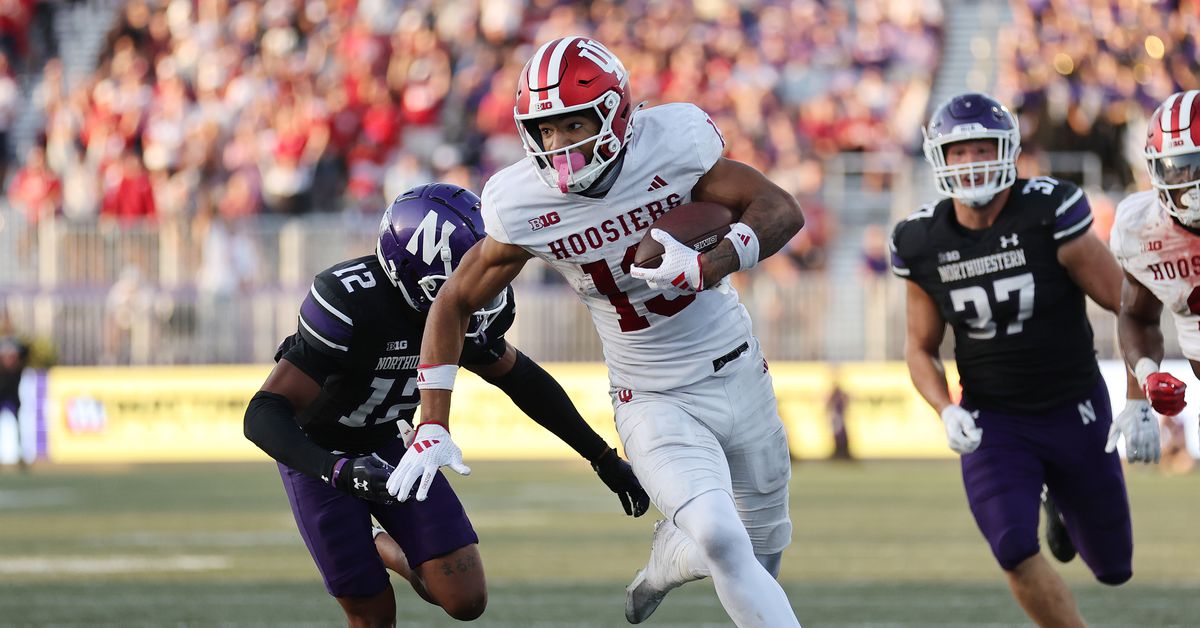

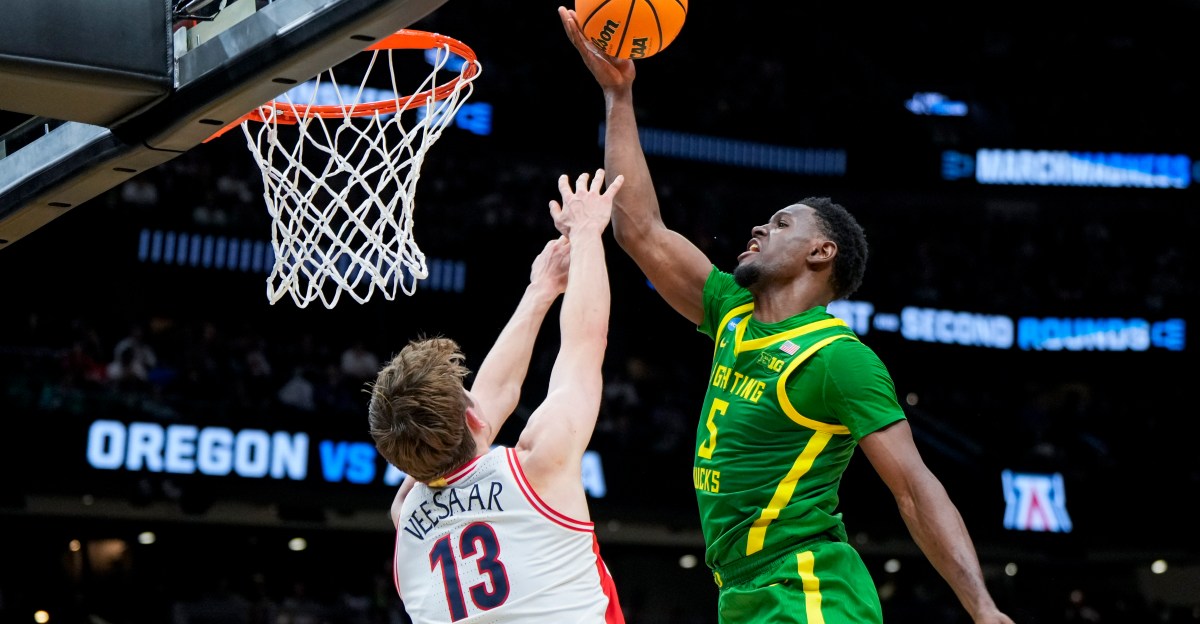
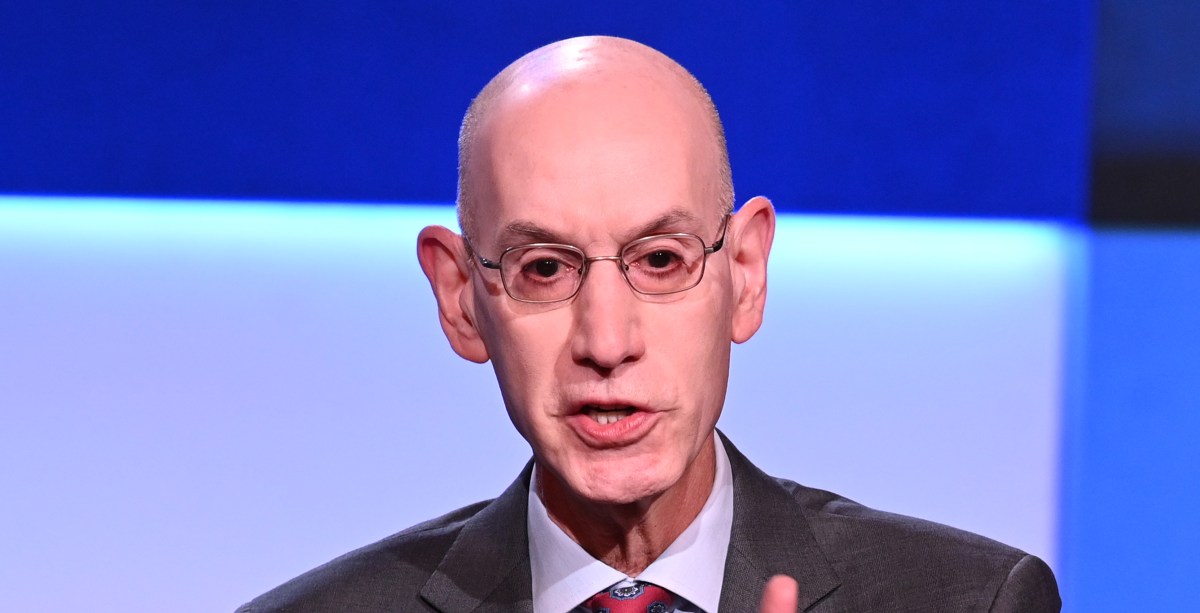


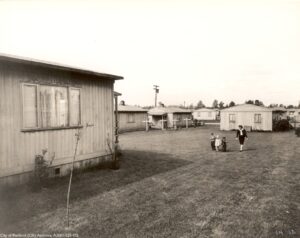
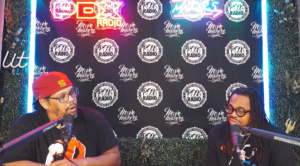






Post Comment